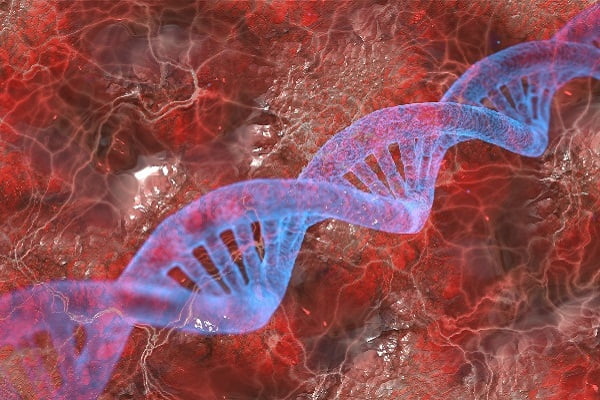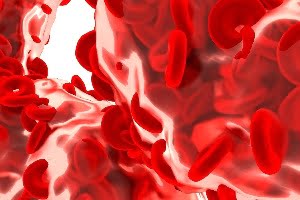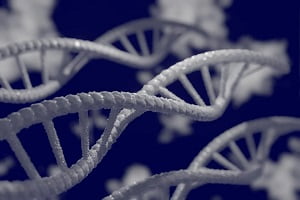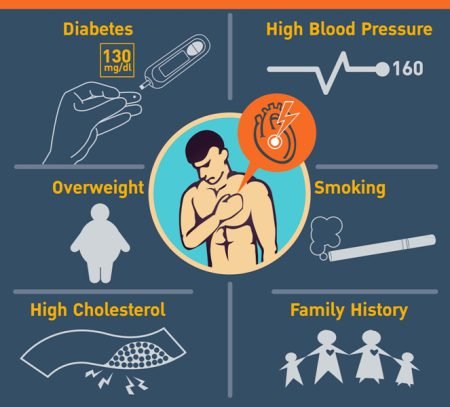Genetics of Thalassemia
- Updated on: Jun 26, 2024
- 4 min Read
- Published on Jul 22, 2019

 How is Thalassemia inherited?
How is Thalassemia inherited?
Thalassemia is a group of inherited blood diseases that affect a person’s ability to produce oxygen carrying protein hemoglobin, resulting in anemia. Every year approximately 100,000 babies are born with severe forms of thalassemia worldwide. Thalassemia is commonly found in people of Italian, Greek, Middle Eastern, Southern Asian and African Ancestry. There are two main types of thalassemia called -“alpha” and “beta” thalassemia, depending on which part of an oxygen-carrying protein in the red blood cells is absent. Both types of thalassemia are inherited in a similar manner. The disease is usually inherited by children from parents who carry the mutated forms of thalassemia gene. A child who inherits one mutated gene is a carrier and the condition is called thalassemia trait. Mostly, the carriers lead a completely normal and healthy life.
A child who inherits two thalassemia trait genes from both the parents suffers from the disease. A child of two carriers has a 25 % chance of receiving two trait genes and having the disease, and a 50% chance of being a thalassemia trait carrier.
Most individuals with alpha thalassemia have very mild forms of the disease, with varying degrees of anemia. Mostly, the severe form of alpha thalassemia affects individuals of Southeast Asian, Chinese and Filipino ancestry, where it results in fetal or newborn death.
A child who inherits two copies of the mutated gene for beta thalassemia suffers from the beta thalassemia disease wherein a child can either have a mild form of the disease, known as thalassemia intermedia, which causes milder anemia or a serious disorder called as thalassemia major or Cooley’s anemia.
The Genetic Inheritance of Thalassemia
Thalassemia is characterized by an altered form of hemoglobin. Hemoglobin is a protein made of heme, alpha globins, and beta globins. Almost 9 different genes help in the production of heme and any changes in these genes may lead to disorders of heme production. Alpha thalassemia occurs when there is a mutation in the gene that codes for alpha globin which therefore results in reduced or absent production of alpha globins. Beta thalassemia occurs with a related change in the beta globin gene. Therefore, we can say that the thalassemias are a result of quantitative mutations in the globin genes. In general, thalassemia is passed in an autosomal recessive manner and the inheritance is very complex as multiple genes can control the production of hemoglobin. People suffering from beta thalassemia have mutations in both copies of the HBB gene in each cell. The parents of an affected person usually carry one mutated copy of the gene and are called as carriers. Carriers generally do not show signs or symptoms of the condition but some carriers of beta thalassemia may sometimes develop mild anemia. When two carriers of an autosomal recessive condition have children, each child will have a 25% risk to have the condition, a 50% risk to be a carrier like the parents, and a 25% chance of not having the condition and not to be a carrier.
The inheritance of alpha thalassemia is complicated because of the mutation of two different genes HBA1 and HBA2. There are two copies of the HBA1 gene and two copies of the HBA2 gene in each cell. For each gene, one copy is inherited from the mother and the other copy is inherited from the father. If each of the parents lacks at least one gene copy, their children are at a higher risk for having alpha thalassemia. The risk and the severity of each child’s condition depend on the number of gene copies lost (deleted) and which combination of the HBA1 and HBA2 genes are affected.
Why is Thalassemia an Inherited Disease?
Thalassemia is an inherited condition. The genes inherited from the parents prior to birth determine whether a person will have thalassemia or not. The clinical severity of thalassemia varies tremendously on the basis of the exact nature of the genes inherited by a person.
At the time of conception, a person receives one set of genes from the mother and another set of genes from the father. The combined effects of different genes determine traits such hair color, height etc. Traits determined by a combination of genes often have gradations in magnitude. Other characteristics like sex of a person are determined by a single gene pair. The inheritance pattern is often complicated in patients suffering from thalassemia because two sets of genes on different chromosomes work together to produce hemoglobin and any defect in this complex can result in thalassemia.
Inheritance of Beta Thalassemia
A defect in the production of beta globin protein from the beta genes is one of the most common causes of beta thalassemia. Although both globin genes are present in the cell, but they fail to produce hemoglobin adequately. Thalassemia major and thalassemia intermedia are inherited as autosomal recessive conditions, which means both copies of the HBB gene in each cell, are mutated. Each parent of an individual with an autosomal recessive condition carry one copy of the mutated gene, but they are typically asymptomatic. On the other hand, people with only one HBB gene mutation in each cell develop mild anemia and are said to have thalassemia minor. In very few families, the HBB gene mutation is inherited in an autosomal dominant manner and in such situations one copy of the altered gene in each cell is enough to cause the signs and symptoms of beta thalassemia.
Inheritance of Alpha Thalassemia
Alpha thalassemia occurs due to failure of one or more of the four alpha globin genes to produce alpha globin protein. The defect in alpha thalassemia is always due to the loss of one or more of the alpha globin genes from chromosome number 16. The inheritance of alpha thalassemia is complex because each parent potentially passes two out of the four alpha globin genes to the offspring. One aspect of the inheritance that simplifies predictions is that alpha genes are present on the same chromosomes and are inherited as pairs. The main issue is whether two alpha genes on the same chromosome are removed. If so, the offspring has the chance of developing a severe alpha thalassemia condition in which two alpha globin genes are absent on one chromosome number 16, and one is missing on the other chromsome number 16. In such a case, the person has only one functional alpha globin gene and the result is a severe, transfusion-dependent anemia called Hemoglobin H Disease. However, if all four alpha globin genes are absent, the condition is incompatible for life. Most fetuses die in uterus in this condition called as hydrops fetalis. Alpha thalassemia in which two genes are absent on the same chromosome occurs commonly in people of Asian ancestry.












